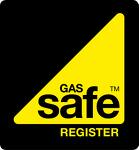|
|
|
01243 841464
|
Plumbing Emergencies and how to prevent themLeaks and floods If hot or cold water starts flooding out of any pipework, then turn off your stopcock immediately (clockwise). The stopcock won't instantly stop the leak is fed by a cold-water tank in the loft or from a hot water cylinder in your airing cupboard. However, look out for other stopcocks or valves near the bottom of the tank or the top of the cylinder and try to turn them off. (Remember which ones you turn off so you can turn them on again later).
Toilets and basins often have their own valve nearby so you won't have to turn off the water to the whole building. If the ceiling starts to bulge then put a hole in it with a broom handle to prevent the weight of the water bringing it down on your head, then collect the water in a bucket. If you need to empty your tank in a hurry, then turn off the mains water at the stopcock and run your bath taps - they normally have the thickest pipes. If you can't find the main stop cock, then go into the loft and wedge the ball cock arm up using a stick or a piece of string this will stop any more water entering the tank. Don't ever try to drain the tank via the cold tap in the kitchen sink as this is normally connected straight onto the mains so not fed by the tank in the loft. and preventing them Find your stopcock and label it in case of emergencies. Stopcocks seize up if left untouched for too long, so turn it off and on again every six months. If it doesn't turn off (clockwise), a pair of pliers will give you more leverage, but don't force it too hard as stopcocks can shear off and cause a real flood. Next time you have a plumber in the house, ask which other valves will isolate hot or cold water, and label them too. If you can't find a stopcock inside the house, then there should be one outside the house, often under a little trapdoor on the pavement. However, these are often very deep, stiff to turn, or buried under earth. You can phone your local water authority if it won't turn, as it is their responsibility, but it is better to do this before an emergency arises! If you have a new kitchen or bathroom fitted, then ensure your plumber fits isolation valves to all appliances, and that the installer leaves easy access to replaceable parts so you can get to them in an emergency without having to break through marble tiles or solid |
|

|





